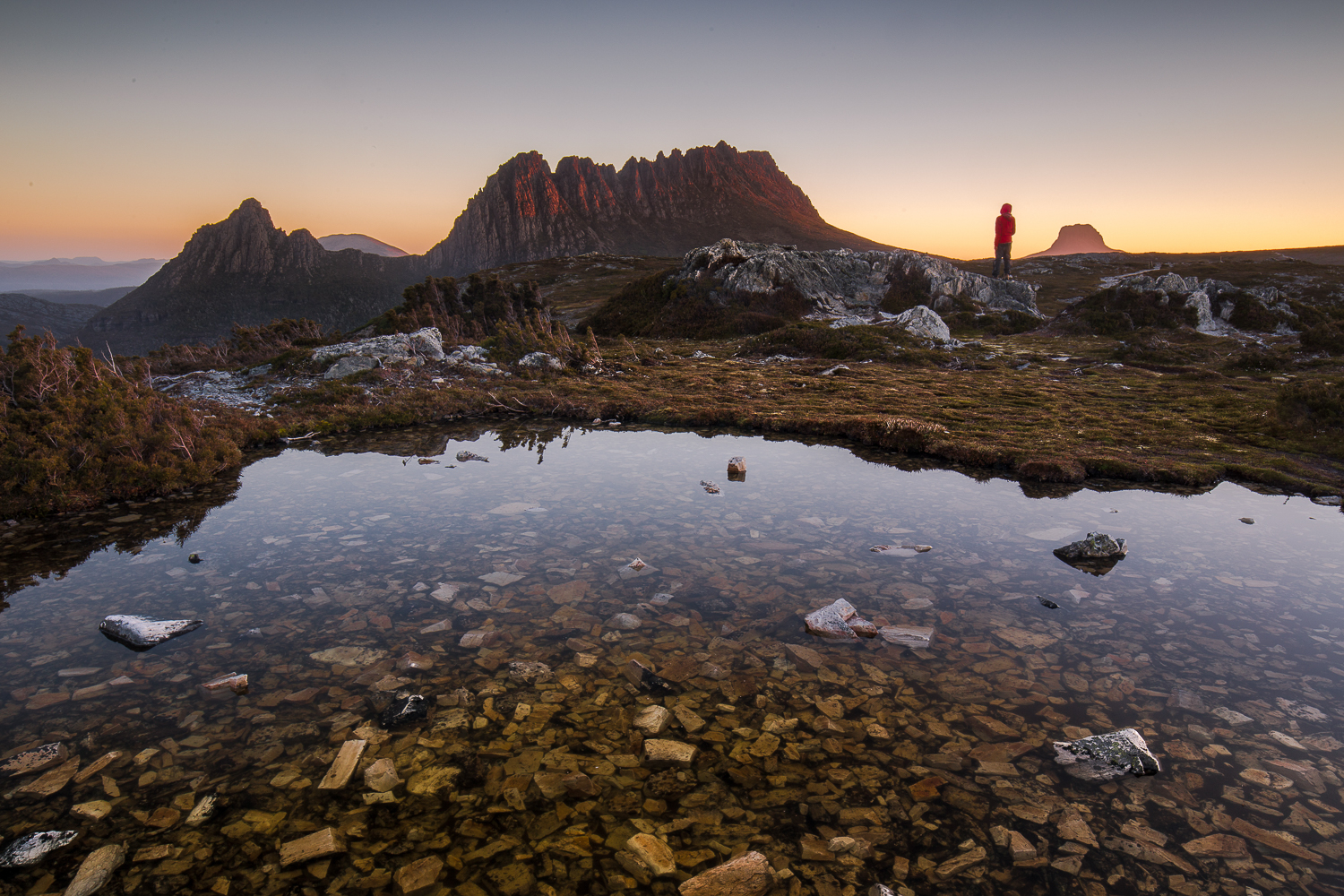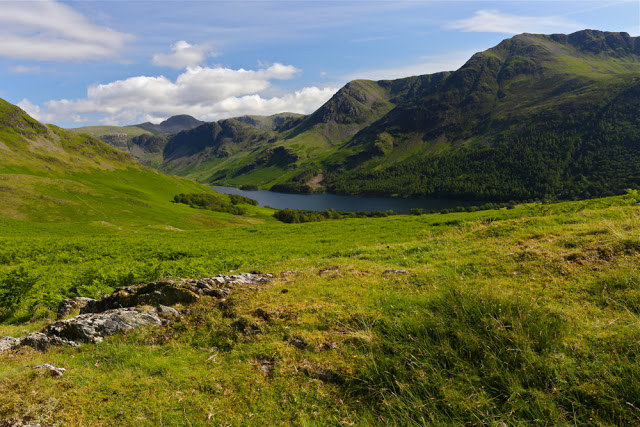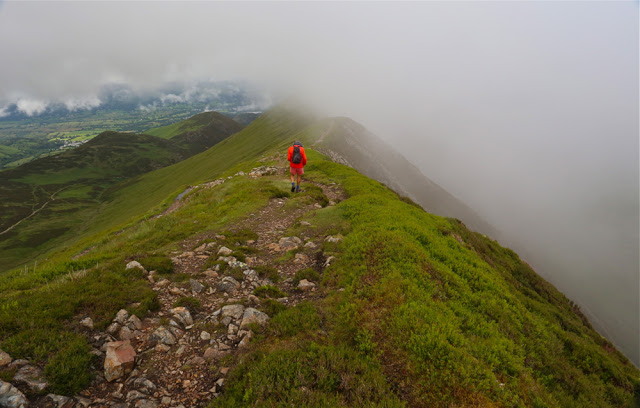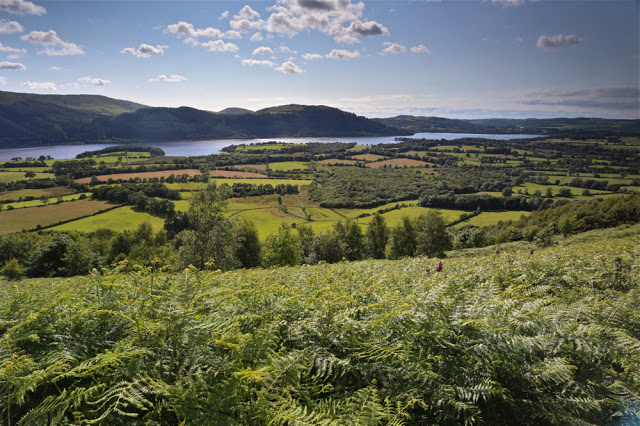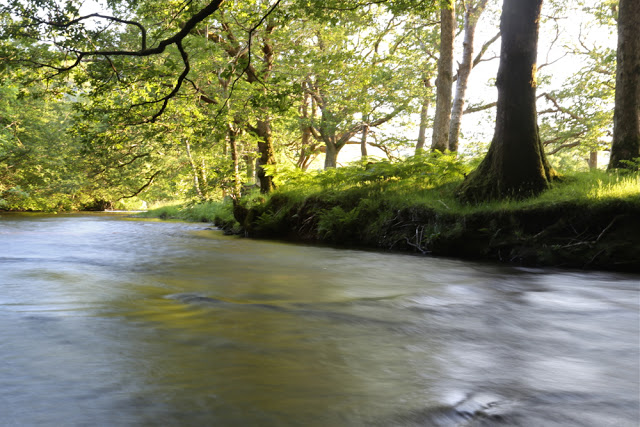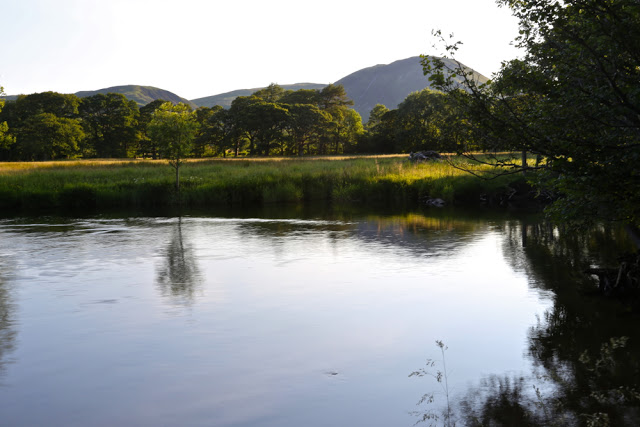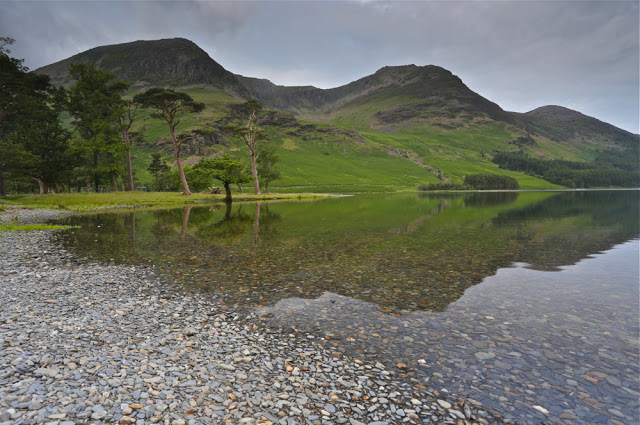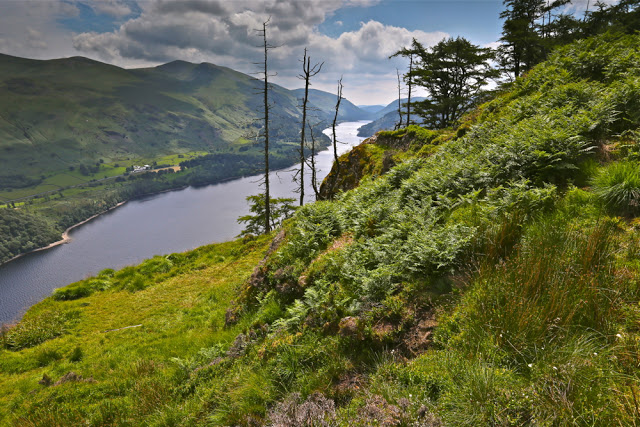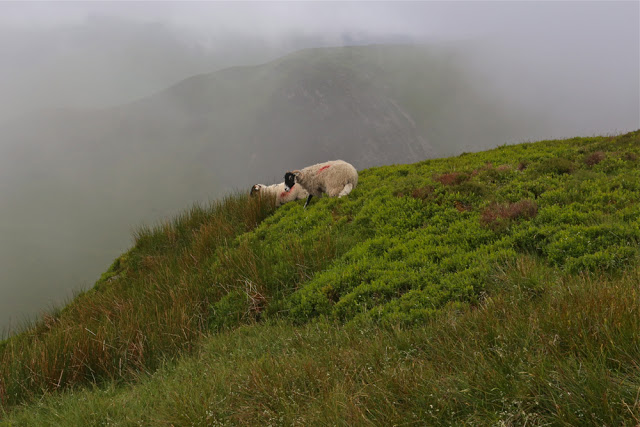I am trying to climb all the Wainwrights (Lakeland Fells). “Isn’t it perverse,” I hear you say, “going to the Lake District to climb peaks when Tassie has so many mountains of its own?” It can seem so, certainly, especially to those who judge a mountain’s worth by its height. If this is your criterion then, yes, forget it. And if lakes are to be judged by volume and impressive dimensions, then forget them too. This is not the country for that kind of importunate drama. However, if you find beauty in subtle shifts of colour and form, in lines and patterns in the landscape, in amusing lumps and bumps as the land progresses upwards; if you love the mixture of verdant green with blue or steely grey, then you might begin to understand the allure.
And if you have a head full of English Literature (especially that of ancient times) as my husband and I do, then you might understand even more.
“OK,” you say, “a holiday, sure. But why bag peaks (Wainwrights) there when there are great Abels and other mountains to collect in Tasmania?”
“Why not do both?”, I retort.
And why did I get started on this idea of wanting to climb all the Wainwrights in addition to as many of the Abels as I can? We were drawn to the Lakes initially because of what the area meant to the poets who claimed part of our imagination, and have continued to return for what it means to us in its own right: for the nuanced beauty it contains. We lived in England for a while before we had children, and have returned since for a term to do some research at Oxford; as an athlete I trained in the Lakes for a month in preparation for the World Championships in 1993, and competed on the fells I now walk over.
Somewhere along the line I began ticking the ones I’d climbed in the index to my Wainwright books, and from there developed the idea of ticking the lot.
We adore our lifestyle in Tassie, and the bushwalking we do here, but we also treasure the Lakes and the regime we adopt while there. I am a completer of things I begin, and now that I have commenced this mission to climb every Wainwright, I won’t stop until I’m finished. And then I’ll turn around and begin all over again, just like I do with a good book. These mountains are now my friends and, having got to know them, I want to keep seeing them. Once will not be enough, but I want to taste everything on the smorgasbord before I go back for seconds in any systematic way.
Although the view from a peak in Tassie stretches further in many cases, and although the scenes tend to be more wild and rugged, the view from a Lakeland peak still has the capacity to thrill and to connect the soul to the infinite.
And if you think the fells are too tame and unchallenging (which is what some say to me), then perhaps you haven’t done them justice, or are judging them without having been there. You can die just as easily in the fells as you can in Tassie (if that’s the level of excitement you’re seeking); in fact, due to population differences, there are more Fell deaths than Tassie wilderness ones. If you find them unchallenging, I suggest you walk faster, or choose routes that are more direct – straight up the face if you will. One creates one’s own challenges in the fells, just as here. I know I have led us into some pretty precarious situations in thick mist over the years, especially on the day a few years ago on Swirl How when my compass said that every direction was north and the ground said nothing helpful at all. That day, a young guy (25) died within a kilometre of where we were, falling off a precipice.
My husband trying hard not to kill himself on the way to Causey Pike. As you can see, there are opportunities for this activity off to the right, especially if you have Parkinson’s Disease. My husband finds ridges like this to be very challenging. Logic says if he fell to the right exactly now, he would not fall down the mountain, but that is not how his emotions feel it.
The Fells and Tasmanian mountains each demand a different type of fitness. In Tassie, as you are fighting bush down lower to get to your peak, the going is often very slow. You need strength and endurance. In England, you can run up the fells with your heart pounding (as long as you are not lugging a full-frame camera). You can do ten or more Wainrights before lunch if you choose the right ones (even with said camera) and are very fit – unthinkable in Tassie. Ten Abels might take you a year if you’re nearing the end of the count and have left all the far-flung ones to last. I have a strong, fit friend whose experienced party took ten days to get a single mountain, and it was only 800 ms high (thus not an Abel. Only mountains over 1100 ms are Abels). This variance does not make one type of mountain superior to the other; it just means that the style of walking (and the gear) required is different.
My husband loves being filled to bursting point every breakfast (which never happens at home), and I don’t mind climbing a mountain or two waiting for the very late – agonising – hour of 8 a.m. when this breakfast is finally served.
And it’s pleasantly sociable climbing in the fells without it being crowded (but then, I have long since climbed the icons like Helvellyn). That said, we had Scafell Pike to ourselves last year on a return visit. We climbed it yet again, just because the sun was shining when I suggested we go up, and although I’d climbed it four times, I’d never seen the view. Alas, I still haven’t. As in Tassie, the weather changes very quickly. I have an excellent collection of photos of my husband surrounded by grey, all claiming to be taken at different times on the top of Scafell Pike.
I enjoy the fact that on the most horrid of days, in a spot that you think is totally outré, you can still come across a fellow traveller. Of course you have a chat. I love to meet people who are as crazy as I am. They’re my type. You have a short exchange and then diverge, for there are endless possible routes in the fells. Sometimes you just give and receive a smile of complicity, a recognition that here is another person smitten with the same disease and the same penchant of going out into wild nature even when it’s furious – sometimes precisely because it’s so raging, as there’s something fun about being out there when nature is trying its best to destroy you. That is wildness as opposed to wilderness. I love both. So did my “friend” Goethe. King Lear’s rages in the storm suggest to me that even Shakespeare knew what it was like to be out there in the inclement elements. It is exhilarating (not that Lear found it so). Elizabeth Bennett loved it too, and I love her (and Jane Austen, her creator who loved to walk).
And where else in the world does a sheep beat you to the summit?
Where else does a sheep show you that here is a possible route down when you’re in a fix?
I love a summit cairn that materialises out of the gloom with the shape of a welcoming member of ovis aries beside it. Unfortunately, they seem very camera shy, and the minute I pull my lens cap off, they’re away.
Tassie’s weather is wild, especially along the tops of the southern ranges, and yet it is only in England that I have been reduced to worming my way along the ground in order to touch the summit cairn. Only in England have I been a mere two meters (horizontal) from my destination yet been in serious doubt about making it. Each centimetre was a fight against a blast that threatened to lift me right off the mountain and deposit me somewhere a long way below. If you think there’s no adventure to be had in England, then you just haven’t tried.
A note on planning: Another factor required by both areas if you are actually trying to collect all the peaks, is careful planning. I spend multiple hours at home before we leave with maps spread all over the bedroom floor, plotting the circular routes we’ll do each day. Sometimes I think I spend more time planning than climbing. It’s like a mini rogaining competition. Once you’re into the end game, you can’t just haphazardly do a mountain here and then decide which one to do in the afternoon. Clusters have to be worked out to minimise or avoid unnecessary travel. When you’re just beginning, this is not so essential, although it makes sense to have a base and climb as much as possible from that point. Now I am discovering isolated mountains carelessly left behind when I was in an area. In two more trips of one week each I’ll have finished my Wainwrights, and one of these trips will be a kind of mop up operation, like a wife tidying up, picking up the strewn bits left here and there by a neglectful husband or kids. At least these strewn bits are beautiful mountains, but on this trip I will have more than the usual amount of driving. I already have it planned. It is feasible.
